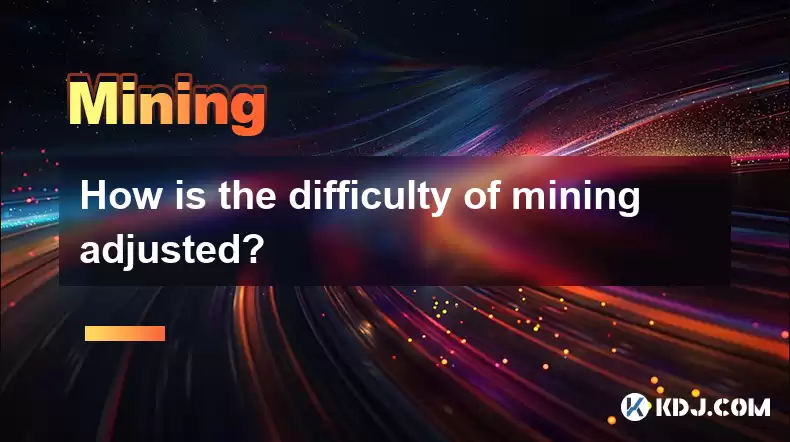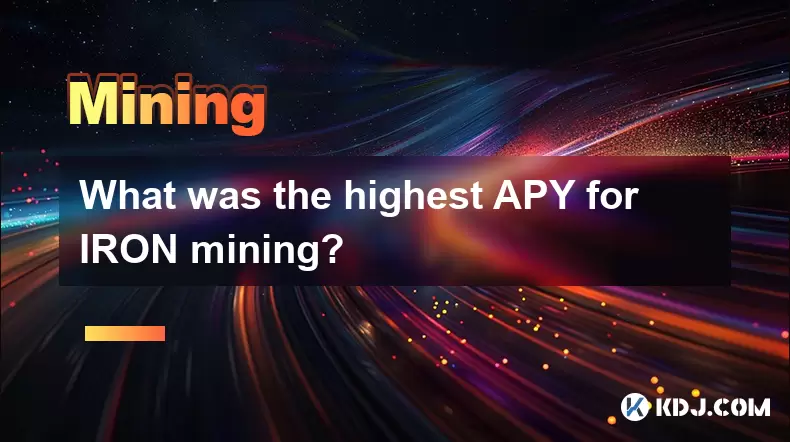-
 Bitcoin
Bitcoin $115000
0.12% -
 Ethereum
Ethereum $3701
4.50% -
 XRP
XRP $3.081
2.99% -
 Tether USDt
Tether USDt $0.0000
-0.01% -
 BNB
BNB $767.9
1.45% -
 Solana
Solana $169.5
3.13% -
 USDC
USDC $0.9999
0.01% -
 Dogecoin
Dogecoin $0.2106
4.30% -
 TRON
TRON $0.3334
1.62% -
 Cardano
Cardano $0.7564
2.54% -
 Stellar
Stellar $0.4165
0.76% -
 Hyperliquid
Hyperliquid $38.75
0.25% -
 Sui
Sui $3.593
3.00% -
 Chainlink
Chainlink $17.08
3.59% -
 Bitcoin Cash
Bitcoin Cash $573.6
4.35% -
 Hedera
Hedera $0.2508
-0.84% -
 Avalanche
Avalanche $23.07
6.46% -
 Ethena USDe
Ethena USDe $1.001
-0.02% -
 Litecoin
Litecoin $120.8
8.17% -
 UNUS SED LEO
UNUS SED LEO $8.943
-0.32% -
 Toncoin
Toncoin $3.400
-5.60% -
 Shiba Inu
Shiba Inu $0.00001255
1.54% -
 Uniswap
Uniswap $9.908
6.32% -
 Polkadot
Polkadot $3.718
2.10% -
 Monero
Monero $303.0
-0.74% -
 Dai
Dai $0.9999
-0.02% -
 Bitget Token
Bitget Token $4.392
0.91% -
 Cronos
Cronos $0.1403
6.31% -
 Pepe
Pepe $0.00001076
1.13% -
 Aave
Aave $267.2
1.80%
How is the difficulty of mining adjusted?
Bitcoin's difficulty adjustment, recalculated every 2016 blocks, ensures stable block times by responding to changes in network hash rate and miner participation.
Apr 01, 2025 at 07:14 am

Understanding Bitcoin's Difficulty Adjustment Mechanism
Bitcoin's mining difficulty is a crucial element ensuring the network's stability and security. It dynamically adjusts to maintain a consistent block generation time, approximately every 10 minutes. This adjustment prevents miners with overwhelming computing power from monopolizing block creation and ensures the network remains decentralized. The difficulty is represented as a numerical value; a higher value means it's harder to mine a block.
The Retargeting Algorithm: How it Works
The difficulty retargeting algorithm is the core mechanism behind this dynamic adjustment. It's a formula that recalculates the difficulty every 2016 blocks. This roughly equates to a two-week period. The algorithm analyzes the time taken to mine the previous 2016 blocks. If it took less than the target time (approximately 10 minutes/block * 2016 blocks = 20160 minutes), the difficulty increases. Conversely, if it took longer, the difficulty decreases.
The Mathematical Formula Behind the Adjustment
The exact formula is complex, but it essentially involves comparing the actual time taken to mine the last 2016 blocks with the target time. The ratio of these times is then used to adjust the difficulty. This ensures that the network automatically corrects for fluctuations in the total hash rate (the combined computing power of all miners). The adjustment is proportional; a significant deviation from the target time leads to a proportionally significant difficulty adjustment.
Factors Influencing Difficulty Adjustment
Several factors can influence the time it takes to mine 2016 blocks, and consequently, the difficulty adjustment. These include:
- The total hash rate of the network: A higher hash rate means blocks are mined faster, leading to an increased difficulty. A lower hash rate results in a decreased difficulty.
- Miner participation: An increase or decrease in the number of active miners directly affects the network's hash rate.
- Mining hardware advancements: The introduction of more efficient ASICs (Application-Specific Integrated Circuits) can significantly increase the network's hash rate, triggering difficulty adjustments.
- Network congestion: Although less direct, high network congestion can indirectly impact block generation times.
Step-by-Step Illustration of Difficulty Adjustment
Let's illustrate the process with a simplified example:
- The network's target block generation time is 10 minutes.
- The last 2016 blocks were mined in 18,000 minutes (shorter than expected).
- The algorithm calculates the ratio: 18000 minutes / 20160 minutes = 0.89
- The difficulty is then adjusted proportionally based on this ratio. The new difficulty will be higher than the previous one.
- If the last 2016 blocks were mined in 22000 minutes (longer than expected), the ratio would be greater than 1, resulting in a difficulty decrease.
Why is Difficulty Adjustment Crucial?
The difficulty adjustment mechanism is essential for maintaining the stability and security of the Bitcoin network. Without it:
- Miners with significantly more computing power could control block creation. This would centralize the network, undermining its core principles of decentralization.
- Block generation times could become erratic. Unpredictable block times would negatively impact transaction confirmations and network reliability.
- The network's security could be compromised. A centralized network would be more vulnerable to attacks and manipulation.
The Impact of Hash Rate on Difficulty
The hash rate is a critical factor influencing the difficulty adjustment. A sudden surge in the hash rate, perhaps due to the introduction of new, more powerful mining hardware, will result in a rapid increase in the difficulty. Conversely, a decline in the hash rate, possibly caused by a decrease in miner participation or an increase in electricity costs, will lead to a reduction in difficulty. This dynamic interplay ensures the network adapts to changes in mining capacity.
Difficulty Adjustment and Network Security
The difficulty adjustment is intrinsically linked to the security of the Bitcoin network. A higher difficulty makes it more computationally expensive for attackers to attempt a 51% attack, where they control more than half of the network's hash rate. This inherent self-regulation contributes significantly to the long-term security and resilience of the blockchain. The system's ability to adapt to changes in mining power is a crucial component of its robust design.
Predicting Future Difficulty Adjustments
While the difficulty adjustment algorithm is deterministic, predicting future adjustments with absolute precision is challenging. The algorithm depends on the unpredictable collective behavior of miners, advancements in mining hardware, and fluctuations in the price of Bitcoin, all of which influence the network's hash rate. While historical data can provide insights, unforeseen events can significantly impact the difficulty adjustment.
Frequently Asked Questions
Q: How often is the Bitcoin mining difficulty adjusted?
A: The Bitcoin mining difficulty is adjusted approximately every two weeks, or after every 2016 blocks are mined.
Q: What happens if the mining difficulty becomes too high?
A: If the difficulty becomes too high, it means it takes longer to mine blocks. This can lead to slower transaction confirmations, but it also makes the network more secure against attacks. Miners with less powerful hardware might become less profitable.
Q: What happens if the mining difficulty becomes too low?
A: If the difficulty is too low, blocks are mined too quickly. This could potentially compromise the network's security and make it easier for attackers to launch a 51% attack.
Q: Can the difficulty adjustment be manipulated?
A: No, the difficulty adjustment is a deterministic algorithm based on the time taken to mine the previous 2016 blocks. It cannot be manipulated by any single entity or group. Any attempt to artificially influence the block generation time would be quickly countered by the automatic adjustment.
Q: How does the difficulty adjustment affect the profitability of mining?
A: The difficulty adjustment directly impacts mining profitability. A higher difficulty reduces the profitability of mining because it takes more computational power and energy to mine a block, while a lower difficulty increases profitability. Miners constantly evaluate the profitability of their operations based on the current difficulty and the price of Bitcoin.
Disclaimer:info@kdj.com
The information provided is not trading advice. kdj.com does not assume any responsibility for any investments made based on the information provided in this article. Cryptocurrencies are highly volatile and it is highly recommended that you invest with caution after thorough research!
If you believe that the content used on this website infringes your copyright, please contact us immediately (info@kdj.com) and we will delete it promptly.
- Velo Universe, DEX, and DeFi Security: Navigating the Future of Decentralized Trading
- 2025-08-05 09:25:13
- Bitget Wallet Revolutionizes Solana with Gas-Free Transactions: A New Era for DeFi
- 2025-08-05 09:25:13
- Ozak AI, Crypto Boom, and ROI Potential: Is This the Next Big Thing?
- 2025-08-05 09:25:24
- Solana's ETF Hopes & the All-Time High Chase: Is SOL Set to Soar?
- 2025-08-05 09:25:24
- Coinbase's Brian Armstrong and the Art of Focused Work: A Deep Dive
- 2025-08-05 09:25:30
- Uniswap Price Prediction: Bullish Reversal on the Horizon?
- 2025-08-05 09:25:30
Related knowledge

What was the highest APY for IRON mining?
Jul 23,2025 at 05:14am
Understanding IRON Token and Its Mining MechanismThe IRON token is a stablecoin that operates within the Iron Finance ecosystem, primarily on blockcha...

What is impermanent loss in IRON pools?
Jul 23,2025 at 09:00am
Understanding Impermanent Loss in the Context of IRON PoolsImpermanent loss is a phenomenon that affects liquidity providers in decentralized finance ...

How to claim rewards from IRON mining?
Jul 23,2025 at 02:21pm
Understanding IRON Mining and Reward MechanismsIRON Finance operated as a decentralized finance (DeFi) protocol on the Polygon and Binance Smart Chain...

How to claim rewards from IRON mining?
Jul 29,2025 at 05:07am
Understanding IRON Mining and Reward MechanismIRON is a dual-token system designed to stabilize the value of a synthetic asset through a combination o...

IRON mining tutorial for beginners
Jul 27,2025 at 12:01am
What Is IRON and How Does It Work in the Cryptocurrency Ecosystem?IRON is a cryptocurrency token that operates on the Binance Smart Chain (BSC) and is...

How to calculate APY for IRON mining?
Jul 28,2025 at 09:49am
Understanding APY in the Context of IRON Token MiningWhen engaging in IRON token mining within decentralized finance (DeFi) platforms, Annual Percenta...

What was the highest APY for IRON mining?
Jul 23,2025 at 05:14am
Understanding IRON Token and Its Mining MechanismThe IRON token is a stablecoin that operates within the Iron Finance ecosystem, primarily on blockcha...

What is impermanent loss in IRON pools?
Jul 23,2025 at 09:00am
Understanding Impermanent Loss in the Context of IRON PoolsImpermanent loss is a phenomenon that affects liquidity providers in decentralized finance ...

How to claim rewards from IRON mining?
Jul 23,2025 at 02:21pm
Understanding IRON Mining and Reward MechanismsIRON Finance operated as a decentralized finance (DeFi) protocol on the Polygon and Binance Smart Chain...

How to claim rewards from IRON mining?
Jul 29,2025 at 05:07am
Understanding IRON Mining and Reward MechanismIRON is a dual-token system designed to stabilize the value of a synthetic asset through a combination o...

IRON mining tutorial for beginners
Jul 27,2025 at 12:01am
What Is IRON and How Does It Work in the Cryptocurrency Ecosystem?IRON is a cryptocurrency token that operates on the Binance Smart Chain (BSC) and is...

How to calculate APY for IRON mining?
Jul 28,2025 at 09:49am
Understanding APY in the Context of IRON Token MiningWhen engaging in IRON token mining within decentralized finance (DeFi) platforms, Annual Percenta...
See all articles

























































































